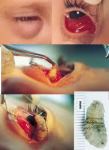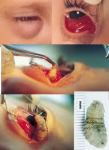According to this article, “Cholera strikes fear in Dominican Republic, tourists reassured”, the first case of cholera has shown itself in Dominican Republic. A 32-year-old Haitian construction worker who returned to the Dominican Republic from a visit to his homeland was infected with Cholera. Although it is the country’s first case, they are still encouraging tourists to come and not be afraid. Their reasons being that it’s only one case and that they will be keeping an eye out for more. According to the Dr. Eugene Gangarosa, its the perfect time to travel. Tourists are usually sanitary and the country will be more watchful for the disease. There will be tests done and its recommended that tourists have some health insurance and to check their health prior to traveling. I personally would be concerned if I were to travel to Dominican Republic and I learned that there is one case of cholera. If it were me I wouldn’t go because Haiti is next door and I would be worry about it spreading, despite what the article says.
Here is the link to the article:





 It’s better to have this disease when you’re young rather than getting it as an adult, because if you do it will be worse. Since the Chickenpox is infectious, it is better to stay away from other people. You don’t want others to be infected. If a pregnant woman has Chickenpox, the baby will come out with birth defects! The pregnant lady will also have many health problems.
It’s better to have this disease when you’re young rather than getting it as an adult, because if you do it will be worse. Since the Chickenpox is infectious, it is better to stay away from other people. You don’t want others to be infected. If a pregnant woman has Chickenpox, the baby will come out with birth defects! The pregnant lady will also have many health problems.



